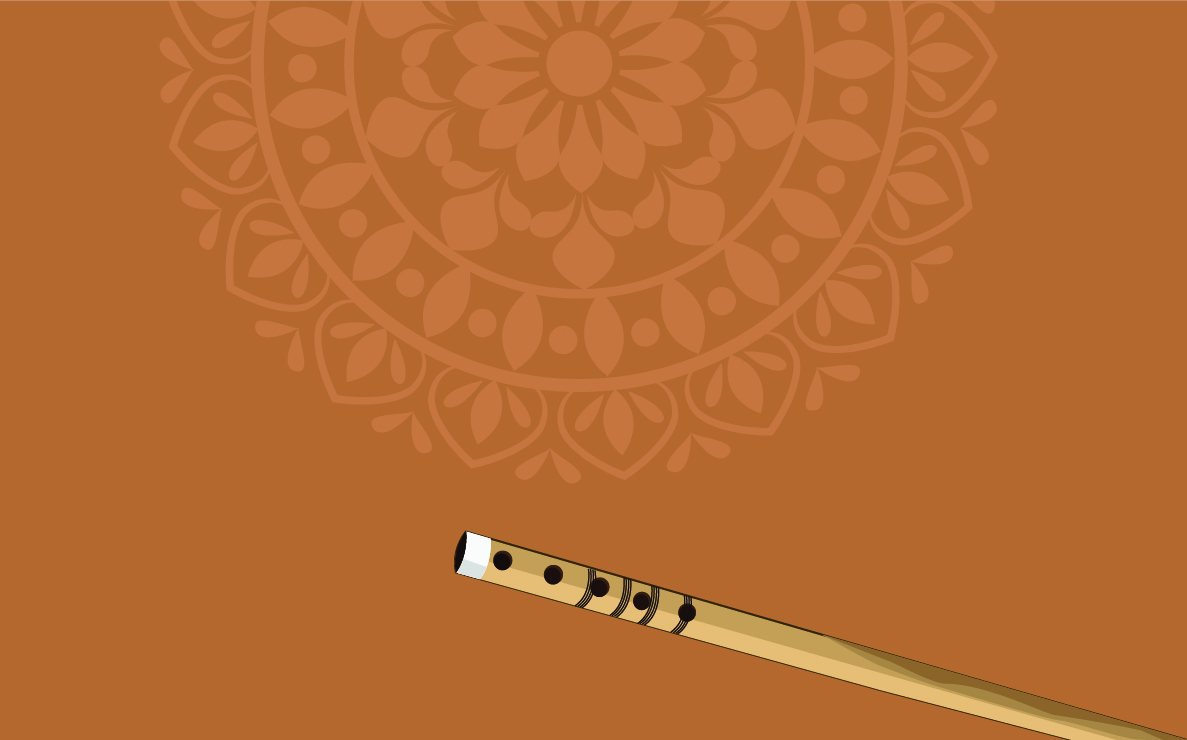Update Chrome Browser



Bansuri is a wind instrument made from bamboo, used extensively in Hindustani Classical Music. A bansuri is traditionally made from a single hollow shaft of bamboo with six or seven finger holes. Some modern designs come in ivory, fiberglass and various metals.
The six hole instrument covers two and a half octaves of music. The bansuri is typically between 30 centimetres and 75 centimetres in length, and the thickness of a human thumb. One end is closed, and few centimeters from the closed end is its blow hole. Longer bansuris feature deeper tones and lower pitches. The traditional design features no mechanical keys, and the musician creates the notes he wants by tapping the various finger holes.

The bansuri-like flute is depicted in ancient Buddhist, Hindu and Jain temple paintings and reliefs, and is common in the iconography of the Hindu god Krishna. It is intimately linked to the love story of Krishna and Radha.
The bansuri is revered as Lord Krishna’s divine instrument and is often associated with Krishna’s Rasa leela dance. These legends sometimes use alternate names for this wind instrument, such as the murali. However, the instrument is also common among other traditions such as Shaivism. The early medieval Indian texts also refer to it as vaṃśi, while in medieval Indonesian Hindu and Buddhist arts,
as well as temple carvings in Java and Bali dated to be from pre-10th century period, this transverse flute has been called wangsi or bangsi.
The early medieval Indian bansuri was, however, influential. Its size, style, bindings, mounts on ends and playing style in medieval Europe artworks has led scholars, such as Liane Ehlich, a flute scholar at the music school in the University of Lucerne, to state that the bansuri (venu) migrated from India into the Byzantium Empire by the 10th century and from there on to medieval Europe where it became popular.
A bansuri is traditionally produced from a special type of bamboo, that naturally grows to long lengths between its nodes (knots). These grow abundantly in Himalayan foothills up to about 11,000 feet with high rainfall. These are particularly found in the northeastern (near Assam, Arunachal Pradesh, Meghalaya, Manipur, Mizoram, Nagaland, Sikkim, Tripura) and Western Ghats (near Kerala) states of India where numerous bamboo species grow with internodal lengths greater than 40 centimetres.
The harvested bamboo with a desired diameter is cut, dried and treated with natural oils and resins to strengthen it. Once ready, the artisans examine the smoothness and straightness and measure the dried hollow tube. They mark the exact positions for the holes, then use hot metal rod skewers of different diameters to burn in the holes. Drilling and other methods of hole making are avoided as it is believed they damage the fiber orientation and the splits affects the music quality. The burnt-in holes are then finished by sanding, one end plugged, the flute ringed at various positions to stabilize its form and shape over time and the unit tested for its musical performance. The distance of a finger-hole from the mouth-hole, and the diameter of the finger-hole controls the note it plays. Adjustments to the diameters of various holes is made by the artisans to achieve purity of the musical notes produced.
The wall thickness of the bansuri determines the tone, range and octave tuning. Once all the holes have reached their performance range, the bansuri is steeped in natural oils, cleaned, dried and decorated or bound with silk or nylon threads. There are two varieties of bansuri: transverse and fipple. The fipple flute is usually played in folk music and is held at the lips like a tin whistle. Because the transverse variety enables superior control, variations and embellishments, it is preferred in Indian classical music.